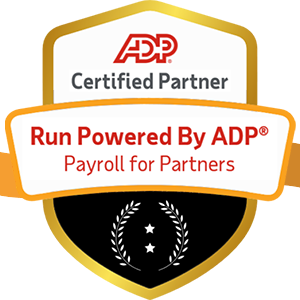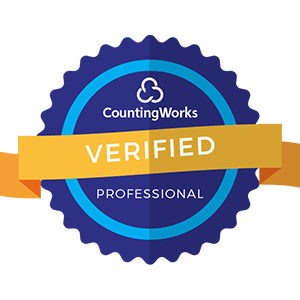
The Multi-State Challenge: Organizations with employees in multiple states face 340% higher compliance complexity and spend 67% more on payroll administration than single-state employers. Multi-state compliance errors cost companies an average of $1.2 million annually in penalties and corrections. With remote work driving 89% more multi-state employment arrangements since 2020, effective multi-jurisdictional payroll management has become a critical business capability.
The traditional model of employees working exclusively within a single state has fundamentally collapsed. Remote work, hybrid arrangements, and geographic talent distribution have created unprecedented complexity in payroll compliance that extends far beyond simple tax calculations to encompass employment law, benefit administration, and regulatory reporting across multiple jurisdictions.
This transformation represents more than operational complexity—it creates strategic risk exposures that can significantly impact business operations. Organizations unprepared for multi-state compliance requirements face cascading consequences including regulatory penalties, audit exposure, employee dissatisfaction, and potential legal liability that can dwarf the cost of proactive compliance management.
The regulatory landscape continues evolving rapidly as states adapt their laws to address remote work realities while competing for tax revenue and protecting worker rights. Legislative changes occur frequently, often with limited advance notice and immediate effective dates that challenge even sophisticated payroll operations.
Modern multi-state payroll compliance requires comprehensive understanding of interconnected regulatory systems that vary dramatically across jurisdictions while maintaining accuracy and efficiency at scale. Success demands strategic approaches that combine technology, expertise, and systematic process management.

The foundation of multi-state payroll compliance rests on accurately determining tax nexus—the connection between business activities and state tax obligations. This concept has evolved significantly as economic activity becomes increasingly digital and geographically distributed.
Traditional physical presence indicators remain relevant and create clear obligations in states where organizations maintain offices, warehouses, retail locations, or other permanent establishments. These activities establish unambiguous nexus that requires payroll tax registration and compliance.
Employee residence and work location create nexus even without business facilities. A single employee working remotely establishes sufficient connection to trigger payroll tax obligations in their state of residence or work location, depending on specific state rules.
Temporary business activities including trade shows, conferences, or project work can create nexus obligations despite brief duration. Many states have de minimis thresholds that exempt short-term activities, but these vary significantly and require careful monitoring.
Revenue-based economic nexus thresholds established for sales tax purposes may affect payroll obligations when organizations exceed specified revenue levels in particular states. While primarily relevant for sales tax, these thresholds can influence overall tax compliance requirements.
Customer concentration in specific states may create nexus even without physical presence when client relationships or service delivery create sufficient economic connection to justify tax jurisdiction claims.
Digital presence through websites, applications, or online services serving state residents can establish nexus under certain circumstances, particularly when combined with other business activities or revenue thresholds.
Multi-state payroll requires navigating dramatically different tax systems that reflect varying state approaches to revenue generation, economic development, and social policy objectives.
State income tax structures range from flat-rate systems that apply uniform percentages to all income levels to complex progressive systems with multiple brackets and rates that change based on filing status and income levels.
Withholding calculation methods vary significantly, with some states using percentage-based systems while others employ complex formulas that consider filing status, exemptions, and other factors that affect take-home pay calculations.
Reciprocal agreements between neighboring states allow employees to pay income tax only to their state of residence rather than both work and residence states. These agreements simplify compliance but require proper documentation and employee notification procedures.
Bonus and commission taxation follows different rules across states, with flat withholding rates ranging from 0% to over 13% depending on jurisdiction. Some states aggregate supplemental wages with regular pay while others apply separate calculation methods.
Stock option and equity compensation create particularly complex compliance challenges as states apply different timing rules, valuation methods, and sourcing requirements that affect both withholding and reporting obligations.
State disability insurance programs operate in several states with varying contribution rates, benefit structures, and eligibility requirements that affect both employee withholdings and employer obligations.
Paid family and medical leave programs continue expanding across states with unique contribution structures, benefit calculations, and administrative requirements that complicate payroll processing.
Transit taxes, local income taxes, and occupational privilege taxes add additional layers of complexity in certain jurisdictions where municipalities impose separate payroll-related obligations.
Modern workforce distribution creates complex scenarios where employees work across state lines, creating allocation and sourcing challenges that require sophisticated understanding of interstate tax principles.
Convenience of employer rules in states like New York require withholding based on employer location rather than employee work location when remote work arrangements serve employee convenience rather than business necessity. These rules significantly affect tax obligations for remote workers.
Temporary telecommuting provisions adopted during COVID-19 continue evolving as states develop permanent frameworks for remote work taxation. Many temporary relief measures have expired, creating compliance obligations that differ from pandemic-era rules.
Home office arrangements require careful analysis of whether employee residences constitute business locations that might create nexus obligations in states where employers previously had no presence.
Day-based allocation systems require tracking actual work days in each state to determine appropriate tax withholding and reporting when employees regularly work across state lines.
Wage sourcing rules determine which state has primary taxation rights for various types of compensation, with different approaches for salary, commissions, bonuses, and equity compensation based on where work is performed.
Threshold exemptions in many states provide relief from tax obligations when employees work limited days or earn minimal income in non-resident states. These thresholds vary significantly and require careful monitoring.
Certificate requirements in reciprocal agreement states mandate specific forms that employees must complete to establish residence-based withholding rather than work-state taxation.
Dual-state withholding obligations may require withholding taxes for both work and residence states when reciprocal agreements don't exist, with employees claiming credits on their tax returns to prevent double taxation.
Year-end reconciliation becomes particularly complex for multi-state employees who may require amended withholding calculations based on actual time worked in different jurisdictions throughout the tax year.
Multi-state payroll compliance involves managing dozens of different deadline schedules and reporting requirements that rarely align across jurisdictions, creating administrative complexity that requires systematic tracking and management.
Quarterly filing requirements remain standard across most states but with different due dates that may not align with federal deadlines. Some states require monthly filings for large employers while others allow annual filing for small employers.
Deposit frequency requirements vary based on tax liability levels, with some states requiring daily deposits while others allow monthly or quarterly deposits depending on total tax amounts.
Year-end reporting deadlines differ significantly across states, with W-2 and reconciliation requirements ranging from January 31 to March 31 depending on jurisdiction and filing method.
Mandatory electronic filing thresholds vary dramatically across states, with some requiring electronic submission for all employers while others base requirements on employee count or tax liability levels.
System compatibility issues arise when states use different electronic filing platforms that may not integrate with existing payroll systems, requiring separate data preparation and submission processes.
Backup filing procedures become essential when electronic systems fail near deadline dates, as states have different policies regarding penalty relief for technical difficulties beyond employer control.

Modern multi-state payroll compliance relies heavily on sophisticated technology systems that can manage complex calculations while maintaining accuracy across multiple jurisdictions.
Automated tax calculation engines must handle real-time rate updates, complex withholding formulas, and jurisdictional sourcing rules while maintaining audit trails that support compliance verification.
Multi-state reporting modules should generate required forms and filings for all applicable jurisdictions while managing different data formats and submission requirements.
Employee self-service functionality enables workers to update withholding certificates, view pay statements, and access tax documents while ensuring proper documentation for compliance purposes.
Integration capabilities with time tracking, HRIS, and financial systems ensure accurate data flow while minimizing manual intervention that increases error risk.
Scalability advantages of cloud platforms enable organizations to handle growing multi-state complexity without significant infrastructure investment while providing automatic updates for regulatory changes.
Security features including encryption, access controls, and audit logging protect sensitive payroll data while meeting state-specific privacy requirements that may vary across jurisdictions.
Disaster recovery capabilities ensure business continuity and compliance even when primary systems are unavailable, maintaining payroll processing schedules regardless of technical disruptions.
Real-time collaboration tools enable distributed payroll teams to coordinate multi-state processing while maintaining proper segregation of duties and approval workflows.
Proactive risk management approaches help organizations avoid compliance failures while building systematic capabilities that prevent recurring issues and reduce overall exposure.
Missed registration requirements in new states often result when business expansion or employee relocation creates nexus obligations that go unrecognized until audit discovery or penalty assessment.
Incorrect withholding calculations due to outdated rates, formula errors, or improper sourcing create both penalty exposure and employee dissatisfaction that can be difficult to correct retroactively.
Late filing penalties accumulate quickly across multiple states, with some jurisdictions imposing significant fees that can exceed underlying tax liabilities when deadlines are missed.
Documentation deficiencies become apparent during audits when organizations cannot provide required employee certificates, time records, or supporting documentation for multi-state allocation decisions.
Regular compliance audits should systematically review multi-state obligations, calculation accuracy, and filing timeliness while identifying areas for process improvement or additional controls.
Employee training programs ensure that payroll staff understand state-specific requirements while building expertise that reduces reliance on external support for routine decisions.
Vendor management protocols establish clear expectations and accountability for payroll service providers while maintaining organizational oversight of compliance performance.
Technology monitoring ensures that system updates, rate changes, and regulatory modifications are properly implemented while testing calculation accuracy across all applicable jurisdictions.

Multi-state payroll compliance continues evolving as legislative changes, technology advances, and workforce patterns create new challenges requiring adaptive management approaches.
Remote work legislation increasingly addresses taxation, employment law, and benefit obligations for telecommuting employees while creating new compliance requirements that may differ from traditional workplace rules.
Interstate compacts and agreements may simplify certain aspects of multi-state compliance while creating new obligations or changing existing requirements that affect payroll processing.
Economic development incentives often include tax policy changes that affect payroll obligations while creating opportunities for optimization when properly understood and implemented.
Artificial intelligence applications in payroll processing increasingly handle complex multi-state calculations while providing predictive analytics that identify potential compliance issues before they occur.
Blockchain technology may eventually provide secure, transparent methods for managing multi-state tax obligations while reducing administrative burden and improving audit capabilities.
Real-time integration between state systems and employer payroll platforms could eliminate manual filing requirements while ensuring immediate compliance with changing requirements.
Talent acquisition strategies must consider compliance costs and complexity when evaluating candidates in new states while balancing talent access against administrative burden.
Compensation planning becomes more complex when multi-state considerations affect total cost of employment and competitiveness across different markets.
Business expansion decisions should incorporate multi-state compliance costs and requirements into financial modeling while considering long-term scalability of operations.
Organizations building multi-state payroll capabilities benefit from systematic approaches that establish strong foundations while providing flexibility for future expansion and adaptation.
Current state analysis should evaluate existing multi-state obligations, system capabilities, and process effectiveness while identifying gaps that require attention or investment.
Future state planning considers business growth plans, workforce distribution trends, and technology requirements while developing roadmaps for capability enhancement.
Risk assessment identifies high-probability compliance failures while evaluating potential impact and developing mitigation strategies that address the most significant exposures.
Resource allocation balances internal capabilities with external support while ensuring adequate expertise and capacity for managing multi-state complexity effectively.
Standard operating procedures should address common multi-state scenarios while providing clear guidance for handling unusual situations that require specialized knowledge or expertise.
Quality control checkpoints throughout payroll processing cycles help identify errors before they affect employees or result in compliance failures that require costly correction.
Documentation standards ensure that decision rationale, supporting information, and compliance evidence are properly maintained for audit purposes while remaining accessible for operational needs.
Training programs build internal expertise while ensuring that staff understand both technical requirements and underlying business impacts of multi-state compliance decisions.
Key performance indicators should track accuracy, timeliness, and cost metrics while providing insights into compliance effectiveness and areas requiring additional attention.
Regular review cycles enable continuous improvement while incorporating lessons learned from compliance challenges or regulatory changes that affect operations.
Benchmarking against industry standards and peer organizations provides context for performance evaluation while identifying opportunities for optimization or enhancement.
Multi-state payroll compliance represents one of the most complex challenges in modern workforce management, requiring sophisticated understanding of interconnected regulatory systems that continue evolving rapidly. Organizations that successfully navigate this complexity gain competitive advantages through improved talent access while avoiding the significant costs and risks associated with compliance failures.
Success requires more than technical accuracy—it demands strategic thinking that integrates compliance requirements with business objectives while building scalable capabilities that support future growth and adaptation. The most effective approaches combine technology solutions with human expertise while maintaining systematic processes that prevent errors and ensure consistent results.
The investment required for effective multi-state payroll compliance—including technology, expertise, and process development—delivers returns through reduced penalty risk, improved employee satisfaction, and enhanced ability to compete for talent across geographic markets. Organizations that treat multi-state compliance as a strategic capability rather than an administrative burden position themselves advantageously for sustained success.
The future of work will be increasingly distributed across state lines, making multi-jurisdictional compliance capabilities essential rather than optional for most organizations. Companies that build these capabilities now will be better positioned to capitalize on talent opportunities while avoiding the disruptions that affect less prepared competitors.
The choice facing business leaders is not whether to invest in multi-state payroll compliance capabilities, but how quickly and effectively they can develop the expertise, systems, and processes needed to manage this complexity successfully. Those who act decisively will find themselves with sustainable competitive advantages in talent markets while avoiding the costly mistakes that plague organizations caught unprepared by multi-state obligations.


